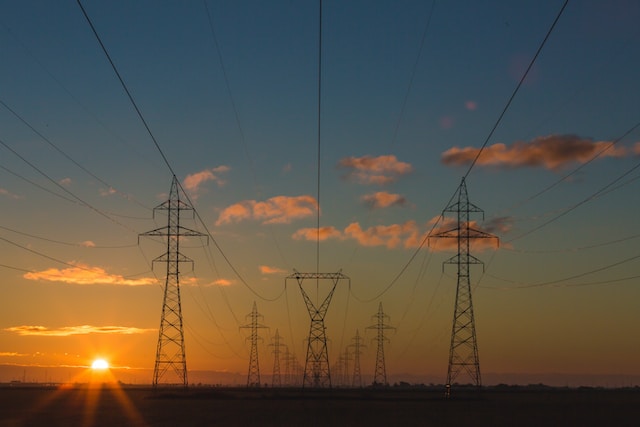Energy is the driving force of the universe, powering everything from the stars that light our night sky to the morning cup of coffee that starts our day. But an intriguing question remains: Does energy ever disappear? The quest to understand the conservation of energy is not just a theoretical pursuit; it influences how we create policies, manage resources, and develop technologies. This in-depth exploration of energy’s fate delves into the law of conservation, dissipation, theoretical possibilities, and practical applications — ensuring you’re armed with the knowledge to make informed decisions that impact our collective energy future.
The Conservation of Energy: A Fundamental Principle
Understanding Energy
Energy, the ability to do work, comes in various forms: kinetic energy from moving objects, potential energy stored within gravity or a spring, or the chemical energy contained within the bonds of molecules. The universe’s operating system fundamentally relies on the immutable law of conservation of energy, where it cannot be created or destroyed, only transformed from one form to another.
Law of Conservation of Energy
The law of conservation of energy is a pillar of physics, grounding our understanding of the natural world. In a closed system, the total energy remains constant over time. If a system’s kinetic energy increases, its potential energy decreases in equal measure.
Transforming Energy: The Multifaceted Shuffle
Conversion Chronicles
The world is a vessel of energy transformation. Within power plants, coal’s chemical potential becomes the electrical energy that lights homes. Here’s how:
- Potential Energy of Coal →
- Thermal Energy (Heating Coal) →
- Mechanical Energy (Turbines) →
- Electrical Energy
The Dynamics of Change
Whenever energy transforms, work is performed. This is evident in the mechanics of a car, where gasoline’s chemical energy shifts to the kinetic movement of your vehicle, propelling you forward.
The Vanishing Act of Energy Dissipation
Lost in Transformation
Despite the conservation law’s rigidity, energy often seems to vanish. The reason is energy dissipation, where not all transformed energy is useful. For instance, your trusty incandescent light bulbs convert only 10% of their input energy to visible light, with the rest dissipating as heat.
Every Day Energy Waste
From the inefficiency of household appliances to the friction that warms your palms when you rub them together, energy is frequently wasted. We can’t avoid dissipation, but understanding it prompts innovation in energy-efficient technologies.
Theoretical Possibilities: When Energy Seemingly Ceases to Exist
The Curious Case of Black Holes
Black holes are cosmic vacuums with gravitational pulls so powerful that not even light can escape. Within their event horizons, does energy break the law? No, it’s a deceptive trick of relativity, where gravitational potential energy becomes unrealized, and the universe accounts for the change.
Quantum Uncertainty and Virtual Particles
Even in the vacuum of space, there’s energy within empty space, predicted by quantum mechanics as fluctuations that pop in and out of existence. These virtual particles might seem like they’re creating energy from nothing but their fleeting existence abides by the universal energy balance.
Practical Applications: Harnessing the Law, Not Fighting It
The Efficiency Revolution
Industries and households are embracing efficiency as the 21st-century energy manifesto. Renewable sources like solar or wind leverage energy transformation without intermediate steps, diminishing dissipation and maximizing conservation.
From Waste to Wattage: The Power of Recycling
By capturing waste energy, we’re on a path to reclaim energy that would typically be lost. Harvesting industrial heat, for example, transforms waste into energy, amplifying productivity and reducing environmental impact.
States of Energy: A Spotlight on the Most Energetic
According to the U.S Energy Information Administration, the top ten energy-consuming states are:
These states harbor significant portions of the country’s energy infrastructure and are pivotal in shaping the energy landscape.
Amplifying the Conversation on Energy Conservation
How Daily Choices Impact Energy
Energy conservation isn’t a grand gesture; it’s a daily act. From the light bulb you choose to turn on to the food you put in the microwave, you’re interacting with the energy landscape. Making informed choices that align with conservation saves resources and money.
The Emergence of Futuristic Energies
As we march towards the future, energies once deemed futuristic, like nuclear fusion and hydrogen fuel cells, transition to reality. These exemplify the meticulous dance of energy transformation, promising realms where plenty of energy can come from forms fewer and cleaner.
Conclusion: The Enduring Lesson of Energy
Energy doesn’t vanish, but it does test the limits of perception. Through understanding and practice, we wield the power to conserve, transform, and innovate. As custodians of an Earth brimming with energy, it is our duty to uphold the law of conservation, not just for ourselves, but for generations to come. In the relentless pursuit of sustainable energy practices, we honor not just the past and present, but the ceaseless energy of the future.
